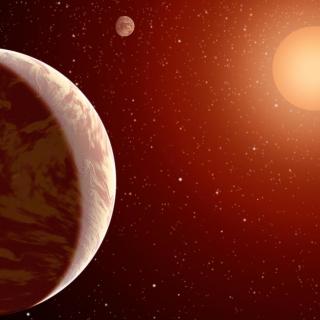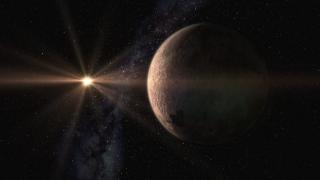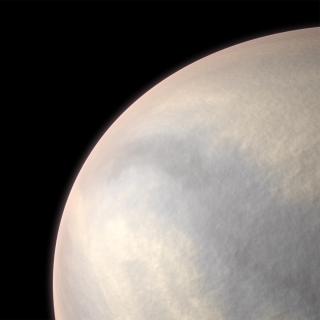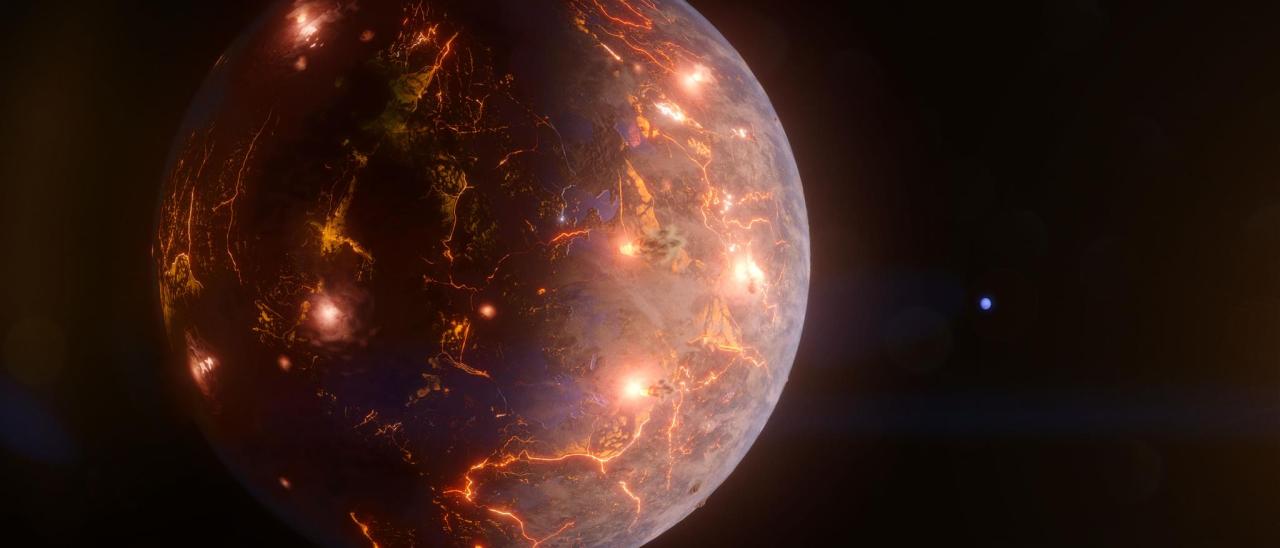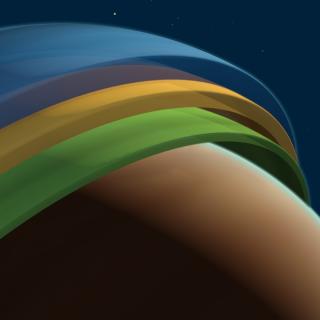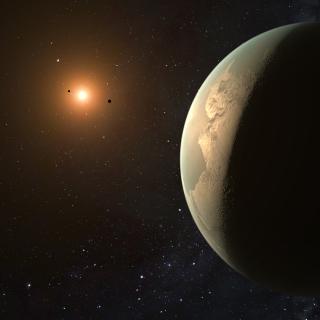LP 791-18 d, illustrated here, is an Earth-size world about 90 light-years away. The gravitational tug from a more massive planet in the system, shown as a blue disk in the background, may result in internal heating and volcanic eruptions – as much as Jupiter’s moon Io, the most geologically active body in the solar system. Astronomers discovered and studied the planet using data from NASA’s Spitzer Space Telescope and Transiting Exoplanet Survey Satellite along with many other observatories. Credit: NASA’s Goddard Space Flight Center/Chris Smith (KRBwyle)
An international research, with the participation of the Instituto de Astrofísica de Canarias (IAC), has discovered an Earth-size exoplanet that may be carpeted with volcanoes. Called LP 791-18 d, the planet could undergo volcanic outbursts as often as Jupiter’s moon Io, the most volcanically active body in our solar system. The study is published in the scientific journal Nature.
LP 791-18 d orbits a small red dwarf star about 90 light-years away in the southern constellation Crater. The team estimates it’s only slightly larger and more massive than Earth. Astronomers already knew about two other worlds in the system before this discovery, called LP 791-18 b and c. The inner planet b is about 20% bigger than Earth. The outer planet c is about 2.5 times Earth’s size and nearly nine times its mass.
During each orbit, planets d and c pass very close to each other. Each close pass by the more massive planet c produces a gravitational tug on planet d, making its orbit somewhat elliptical. On this elliptical path, planet d is slightly deformed every time it goes around the star. "These deformations can create enough internal friction to substantially heat the planet’s interior and produce volcanic activity at its surface. Jupiter and some of its moons affect Io in a similar way," says Merrin Peterson, a graduate student at the University of Montreal (UdeM) who has led the study. Jupiter and some of its moons affect Io in a similar way.
Planet d sits on the inner edge of the habitable zone, the traditional range of distances from a star where scientists hypothesize liquid water could exist on a planet’s surface. If the planet is as geologically active as the research team suspects, it could maintain an atmosphere. Temperatures could drop enough on the planet’s night side for water to condense on the surface.
“LP 791-18 d is tidally locked, which means the same side constantly faces its star,” explains Björn Benneke, a researcher at the UdeM who has co-led the study. “The day side would probably be too hot for liquid water to exist on the surface. But the amount of volcanic activity we suspect occurs all over the planet could sustain an atmosphere, which may allow water to condense on the night side.”
"This study is very revealing since one of the big questions in astrobiology, the field that broadly studies the origins of life on Earth and beyond, is if tectonic or volcanic activity is necessary for life,” says Felipe Murgas, a researcher at the IAC and co-author of the article. “In addition to potentially providing an atmosphere, these processes could churn up materials that would otherwise sink down and get trapped in the crust, including those we think are important for life, like carbon,” adds Enric Pallé, a researcher at the IAC who also participated in the study.
Scientists discovered and studied the planet using data from from NASA’s Transiting Exoplanet Survey Satellite (TESS) and retired Spitzer Space Telescope, as well as a suite of ground-based observatories, including observations with MuSCAT2 installed on the Carlos Sanchez Telescope at the Teide Observatory (Tenerife, Spain). Spitzer’s observations of the system were among the last the satellite collected before it was decommissioned in January 2020. Planet c has already been approved for observing time on the recently launched James Webb Space Telescope, and the team expects planet d to be an exceptional candidate for atmospheric studies by the mission.
From the IAC, researchers Hannu Parviainen and Kiyoe Kawauchi (currently working at the University of Tokyo) have also participated in the study.
Article: Merrin Peterson; Björn Benneke et al. “A temperate Earth-sized planet with tidal heating transiting an M6 star”. Nature, 2023. DOI: 10.1038/s41586-023-05934-8
Contacts at the IAC:
Felipe Murgas, fmurgas [at] iac.es (fmurgas[at]iac[dot]es)
Enric Pallé, epalle [at] iac.es (epalle[at]iac[dot]es)

